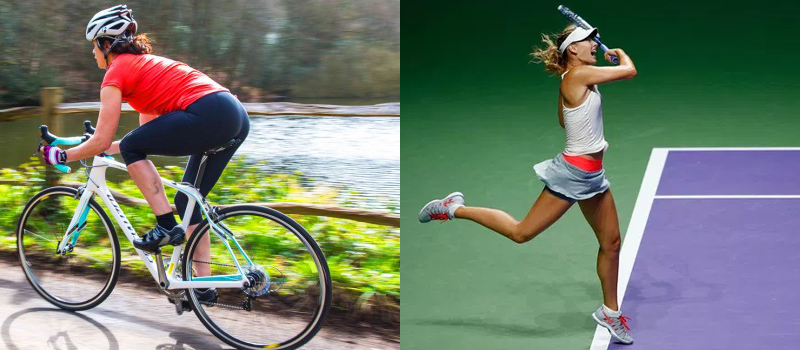The thrill of having fun with the girls could be exactly what drives women to participating in women-only team sports.
Nonetheless, there’s also potential to gain physical, health and mental rewards in the process. Certainly, there’s a myriad of fitness benefits including the fact that it improves cardio, enhances endurance and in other circumstances, flexibility.
All else considered, the best kind of exercise is the kind that you enjoy, because if you know what you’re doing you’re more likely to stick to it.
That said, the following are 5 recreational sports for the working class woman:
-
Swimming :
Water is calming and low impact. It helps maintain healthy lungs, builds strength and cardio abilities simultaneously while bringing you closer to nature.
For long, it has been a symbol of clarity and renewal and is somewhat similar to meditation in the sense that it gives the brain a little break from the constant overstimulation the modern working-class woman is bound to experience.
As compared to plyometric training and jogging, swimming is an excellent way to fit cardio into your workout routine without having to put stress on the muscles, joints and bones. It’s a perfect way to stay active while at the same time taking care of all the parts of your body.
-
Tennis :
Tennis is probably the original version of a sport for a lifetime and a pretty competitive one at whatever age. It’s great both for anaerobic and aerobic exercise in that it builds leg strength, improves balance, agility and coordination.
This can be particularly important in the execution of daily operations not just in your career but also when you get home after a busy day’s work. Tennis is a rather high impact sport, which means that the body might experience some form of wear and tear but your game necessarily evolves as you age.
The sport lends itself to this transition though, and much better than most other high-impact sports. You may sprint slower and smash less, but tennis remains a viable exercise for coordination, balance, flexibility and for the heart as one ages.
-
Soccer (Football) :
If you still have some World Cup fever, you can enjoy translating that passion into a pitch near you.
With soccer, you get to walk a little, jog a little more and occasionally sprint. The fact that the playing surface has large dimensions means that you literally have plenty of ground to cover and that certainly, you’ll find yourself in a couple of foot races.
Soccer also gives you a chance to jog from side to side and backward, which keeps your body fit and liber. The only downside is the fact that flexor injuries are quite common. On the long run, however, the goal is to get some exercise and have some fun with fellow women while at it.
-
Table Tennis
Table tennis is a great sport when it comes to getting your heart rate up and getting up a sweat. It involves the use of a table and a ping pong paddle (racket) to constantly smash the ball to and fro an opponent.
When played at higher levels, it can count as one of the fastest sports ever. But, you have to be a pro to get an awesome workout.
As a working class woman, you can surely spare a couple of hours during the week to hit that little white ball around – and that can do wonders for your fitness.
It’s very easy on the body; you only have to play according to your own limitations and capabilities yet still be competitive. Considering the fact that it’s a non-contact sport, there’s a minimal chance of bruising and breaking of bones. Besides, you get to have a close match and a great time, all in one package.
-
Cycling :
The beauty of cycling is that you don’t have to do it through the entire country to experience the rewarding benefits of biking.
Additionally, if you’re not for the idea of riding on the open road, there’s always the option of a stationary bike. Like swimming, cycling does not put as much pressure on the body and thus won’t wear down ligaments and cartilage.
At the same time, it tones and strengthens muscles, increases stamina and improves mobility and flexibility. It is associated with improved circulation and heart function. Much like swimming, it’s reported to reduce depression, anxiety and stress.

